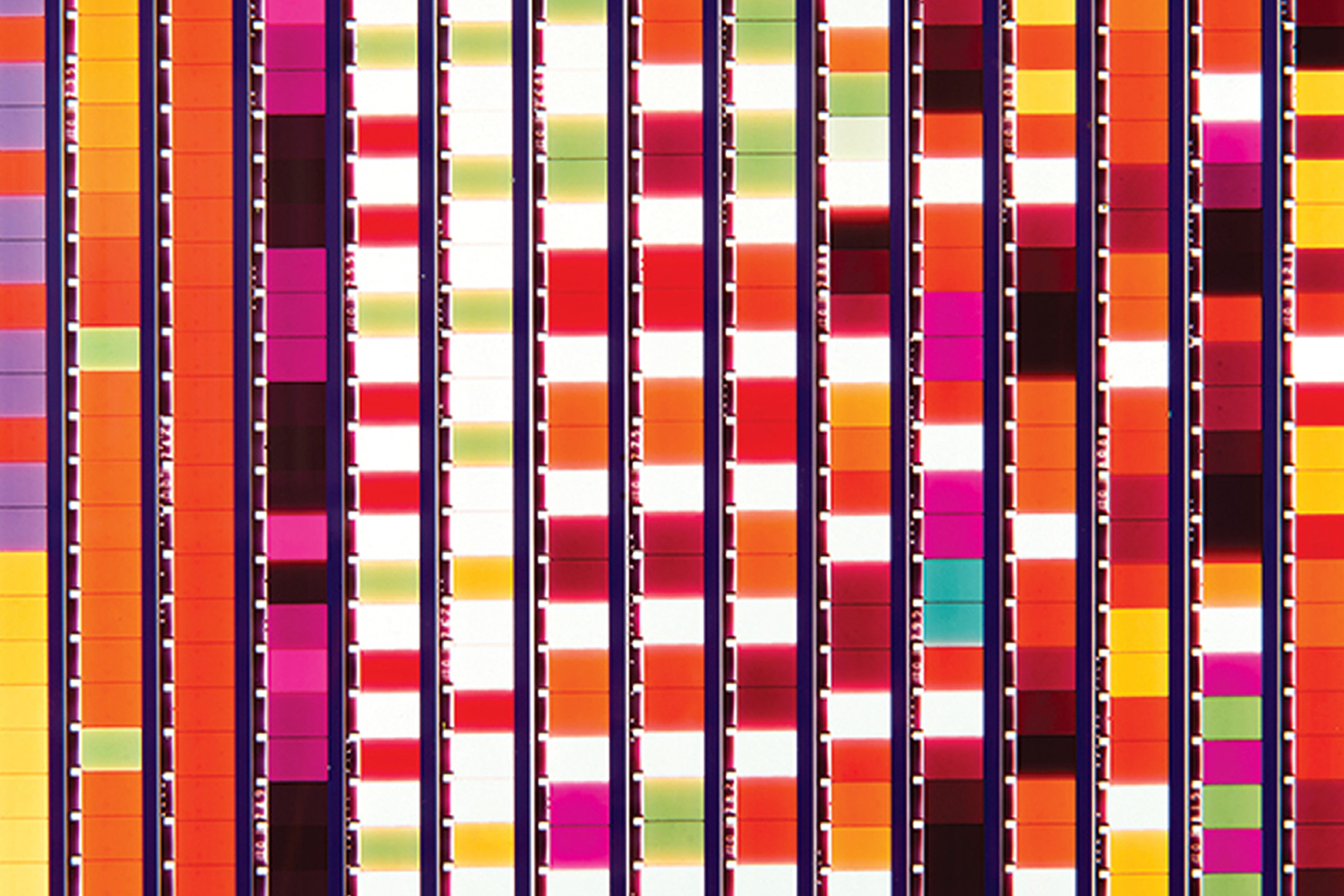

+ Google Map
$8 – $12
Get Tickets
Dedicated to Daphne Oram
On a celluloid film print, even sound is made of light. Running alongside the picture is the optical soundtrack, an image in itself. A beam of light penetrates it, exciting a photoelectric cell with its sound determined by the pattern of black and white. Ever since sound first joined film, artists have turned their eye to this strip which is most frequently the site of pre-recorded music and sound. Sounding Ornaments presents films which use the optical track and the projector as their sonic instruments.
The Whitney Brothers pioneered experimental animation influenced by vanguard composers like Schoenberg. Using a homemade weighted pendulum, the Whitneys created abstract patterns on the optical track of Five Film Exercises resulting in incredible congruity between image and sound. With the ensuing minimalist turn of American experimental filmmaking, Peter Kubelka examined flickering black and white frames in Arnulf Rainer alongside flickering black and white noise. Paul Shartis’ Ray Gun Virus continues one step further by examining what would happen if the film print’s sprocket holes were to run through the photoelectric sound cell. Barry Spinello extended McLaren’s experiments into pure abstraction by hand painting on both the image and the soundtrack of Soundtrack, creating a frenzy of sounds. And finally with Newsprint, Guy Sherwin collaged strips of newspaper between clear film resulting in an image and a sound of the projector “reading” the newspaper.
Co-presented with Nightletter.
PROGRAM
Five Film Exercises / John Whitney & James Whitney / 1943-45 / 21 min / 16mm
Arnulf Rainer / Peter Kubelka / 1960 / 7 min / 16mm
Ray Gun Virus / Paul Sharits / 1967 / 14 min / 16mm
Soundtrack / Barry Spinello / 1969 / 10 min / 16mm
Newsprint / Guy Sherwin / 1972 / 5 min / 16mm
Paul Sharits: Ray Gun Virus (low res excerpt)
- This event has passed.
